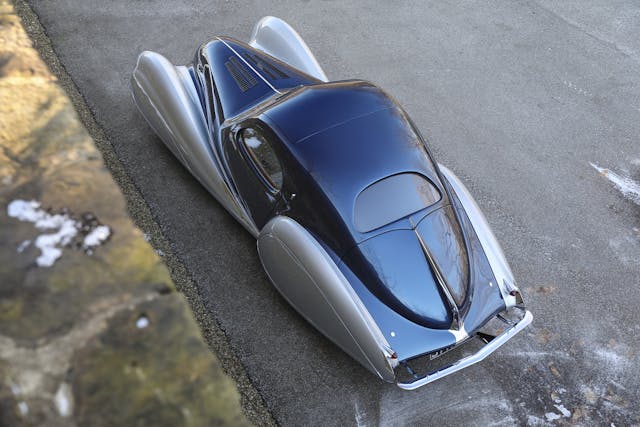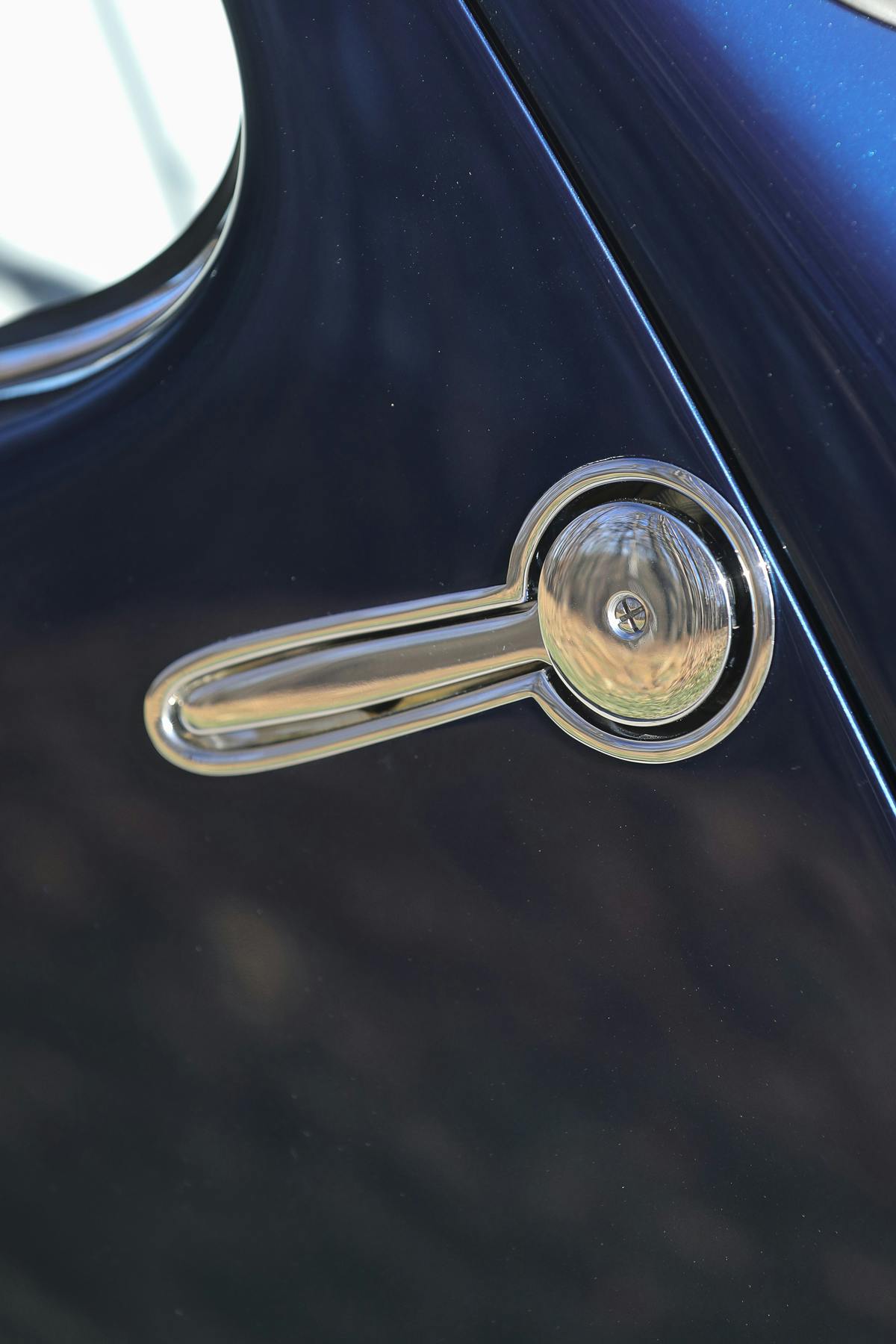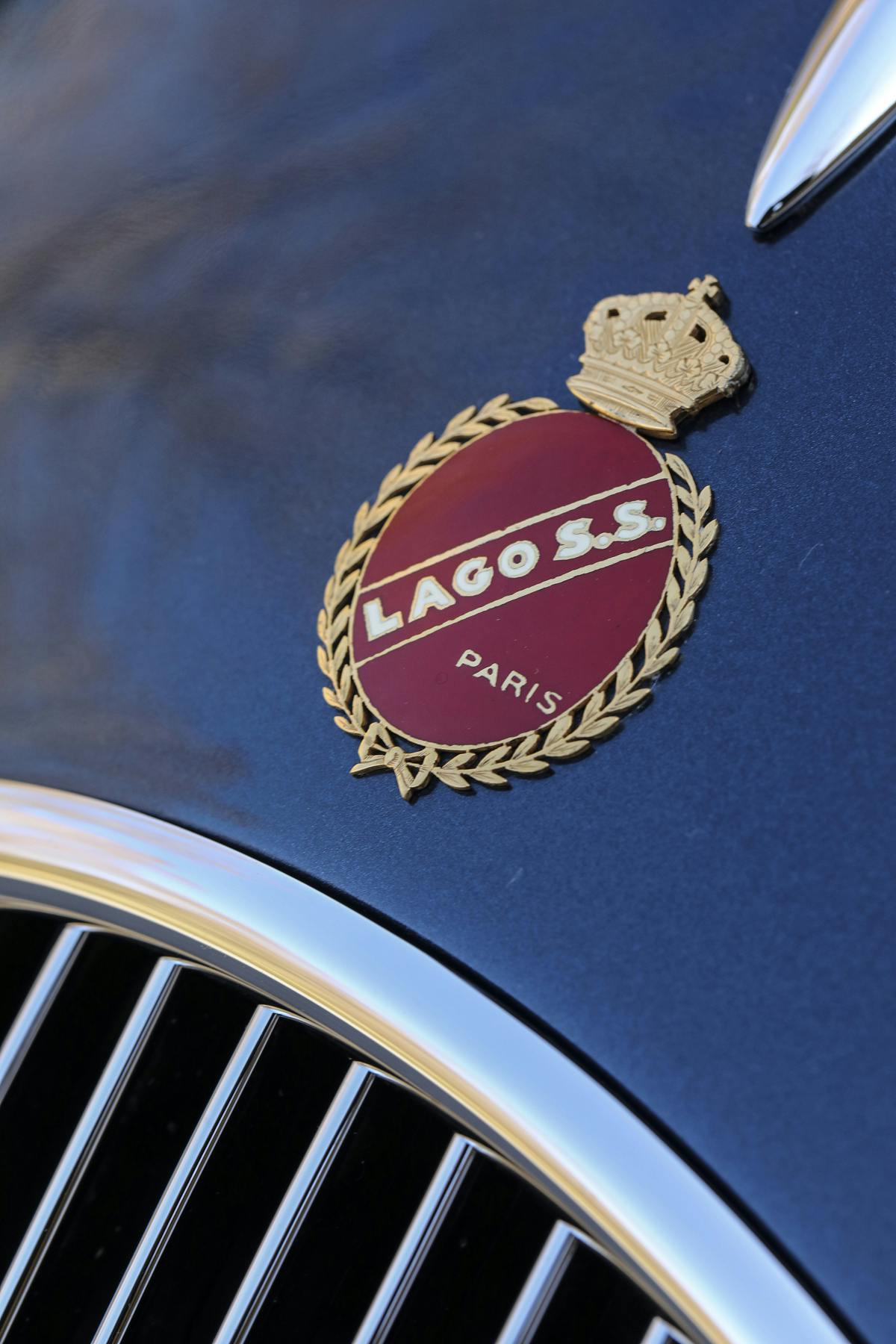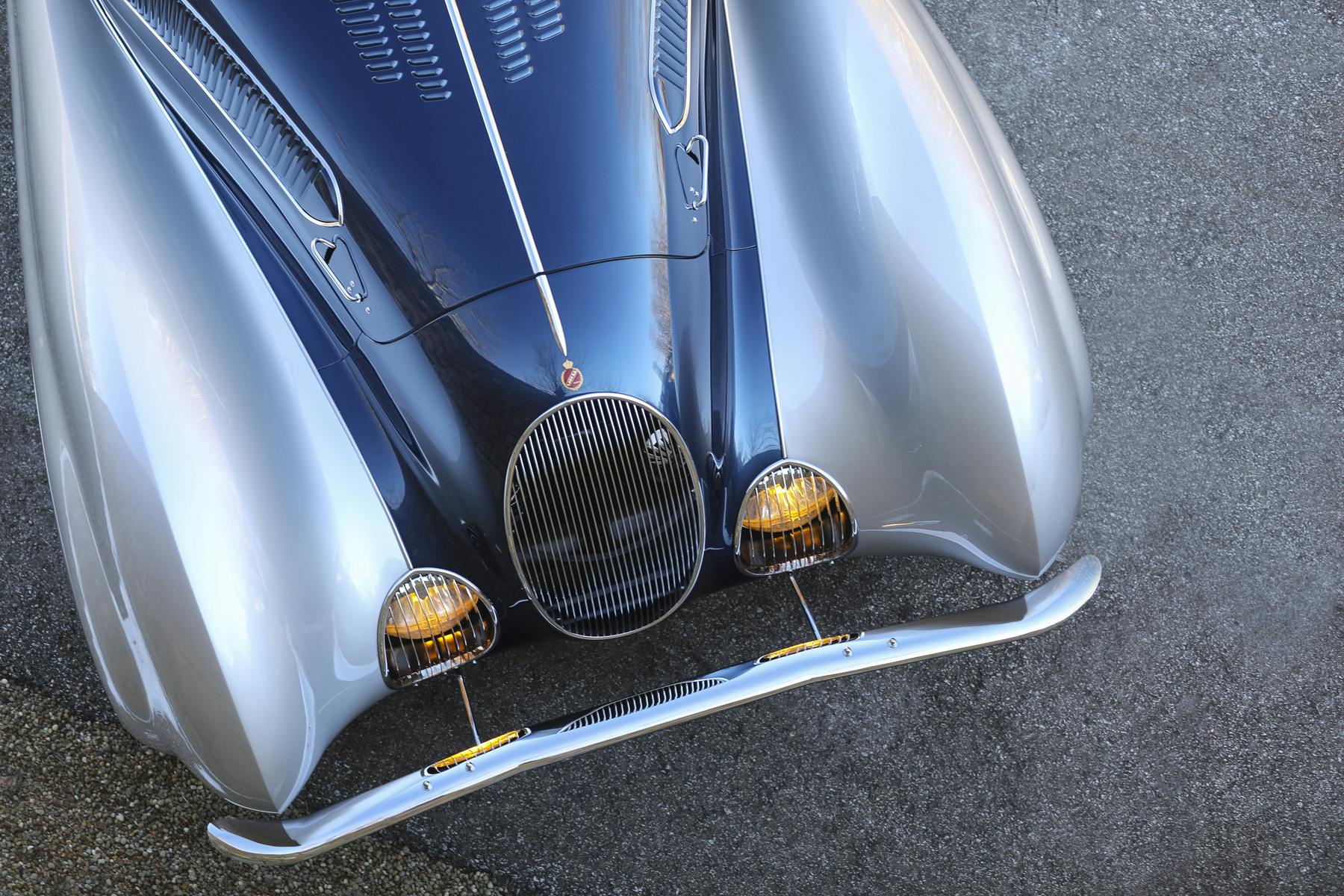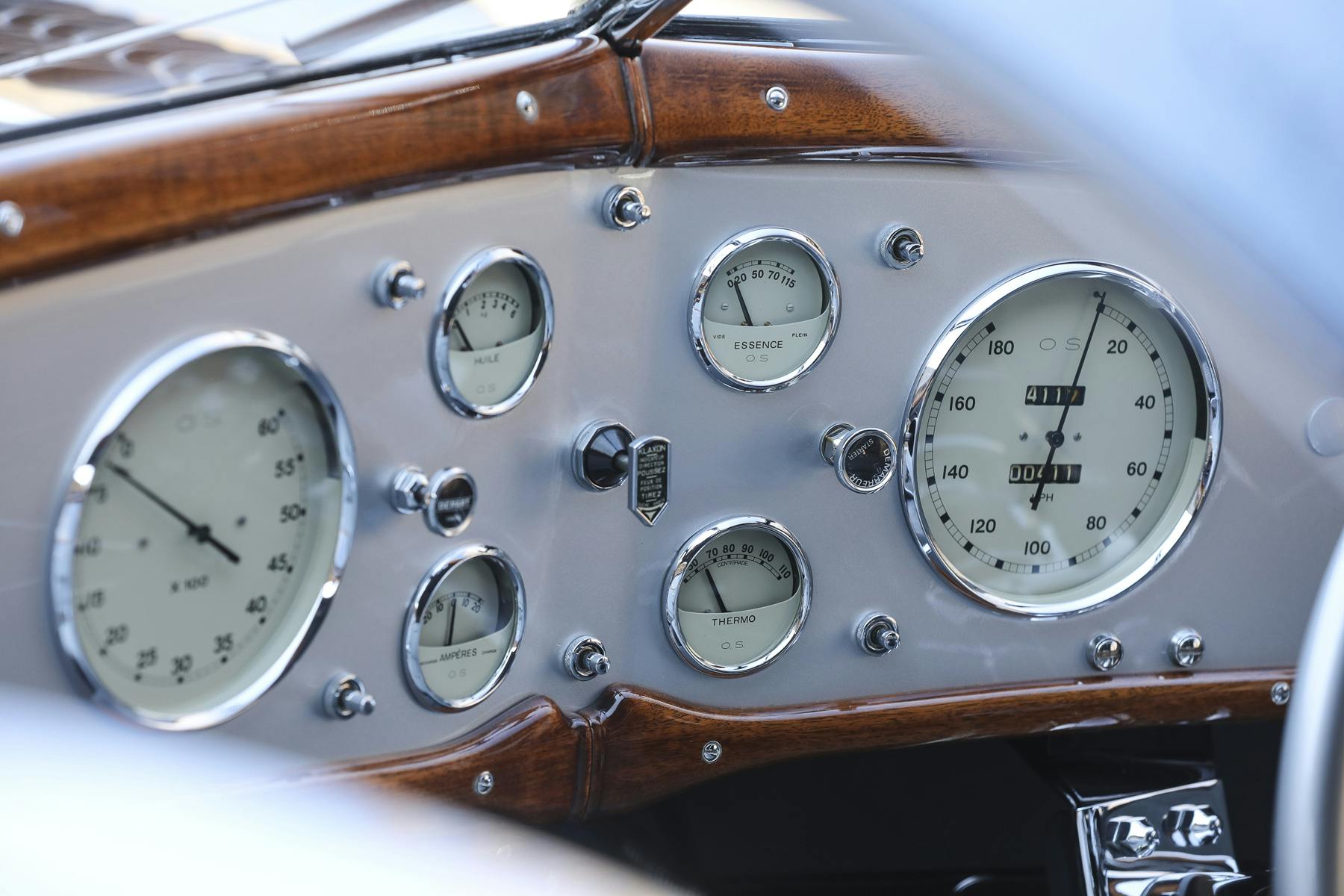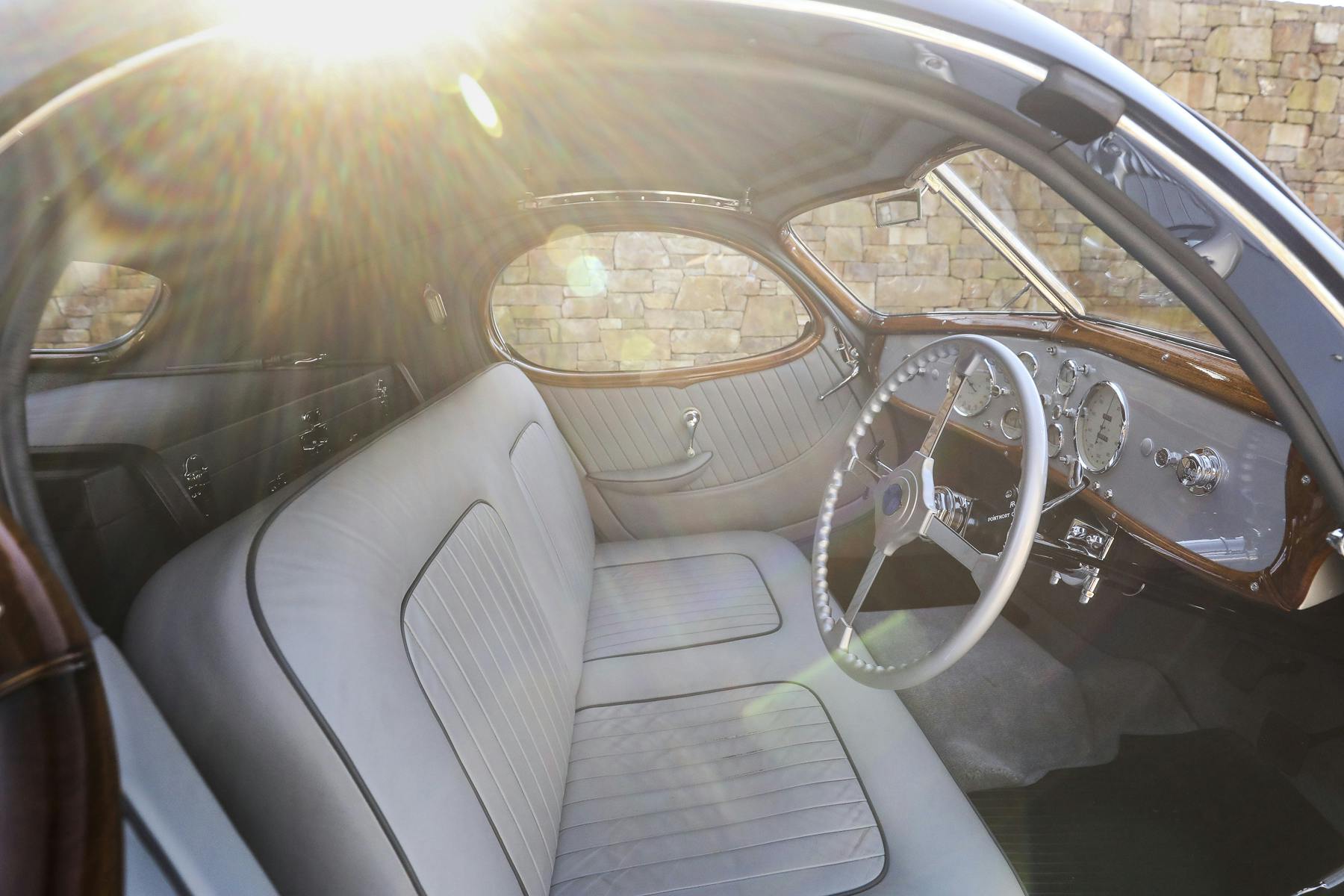Media | Articles
Rare and original, this prewar French beauty could bring $10M+
Ten million dollars? Seeing that astronomical number written down is enough to make your eyes glaze over. Frankly, it’s an amount for which the average person on the street has no earthly reference. The six- and low seven-figure range is generally populated by suburban houses; cross into the eight-digit range, and you tread on the threshold of silly money.
What does $10M buy? Well, this 1937 Talbot-Lago is headed to Gooding & Company’s Amelia Island auction this March, where it is expected to bring that much or more. The car’s age conspires with that eye-popping sum to remove it from the realm of easy understanding. Especially for those who reflexively translate $10M as “three or so Bugatti Chirons,” this car looks unmistakably old, with its dramatically tapered fender flares separate from the body, windows the size of hobbit-hole doors, and delicate bumpers that look as if they’d bend to a finger’s touch. What even is a Talbot-Lago, anyway?
“In general, eight-figure cars possess an exclusive combination of rarity, historical significance, and cultural importance,” says Brian Rabold, Hagerty’s vice president of automotive intelligence. “Having only one or two of these attributes isn’t enough.”
One of only two competition-proven Talbot-Lago designs bodied by illustrious French coachbuilder Figoni et Falaschi, and the only one that survives today untouched, this car has what it takes.
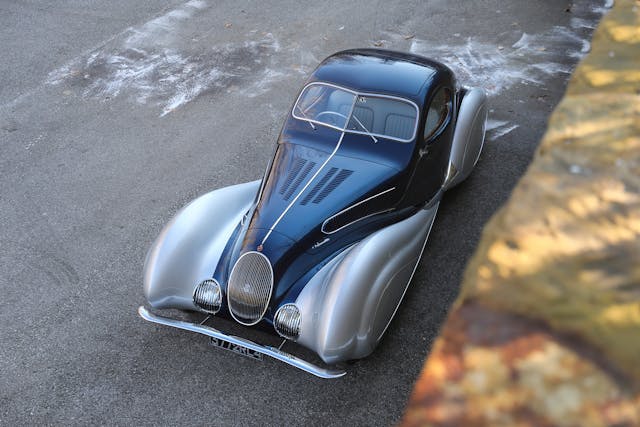
If you peruse the Hagerty Price Guide, filtering for cars worth $10M in best-in-the-world (#1, or Concours) condition, you’ll find a litany of storied Ferraris kept company by a Mercedes-Benz, an Aston Martin, a McLaren, and a Jaguar. Think Ferrari 250 GTO (and 250 LM), the Aston Martin DB4 GT Zagato, McLaren F1 (one of which sold for $21.5M in 2021). Each is a technological tour-de-force that represented its manufacturer at the top of its game, both design and engineering. Most of the models boast international motorsport wins or wear sheetmetal from the most illustrious of the Italian design houses—in many cases, laying claim to both. Exotic metals and limited volume are par for the course.
Marketplace
Buy and sell classics with confidence
Talbot-Lago was born when Antonio Franco Lago, a London businessman, chose the nearly bankrupt Talbot-Darracq as the fulfillment of his automobile-producing ambitions. Only a year after buying out the beleaguered French firm, Lago pulled the silk from his company’s first production car, the Talbot-Lago T150 Grand Sport, at the 1934 Paris auto show. The basic mechanical recipe: an inline-six engine paired to a Lago-patented pre-selector gearbox.
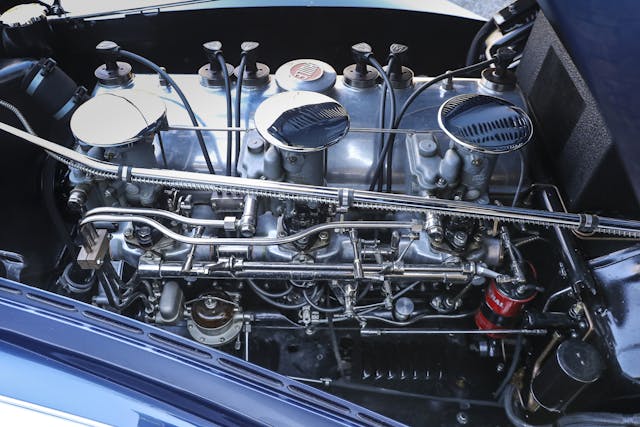
Two variations followed: The competition-spec T150 C—in these days, racing was the most effective form of advertising—and the street-legal version of the race car, the T150-C-SS. The short-wheelbase model sported a four-liter, 140-hp straight-six engine topped with three carburetors and an aluminum cylinder head, riding on an underslung rear axle and independent transverse leaf springs up front. These essentially race-spec chassis, sold in appropriately low volume, caught the attention of high-end coachbuilders, including Figoni et Falaschi.
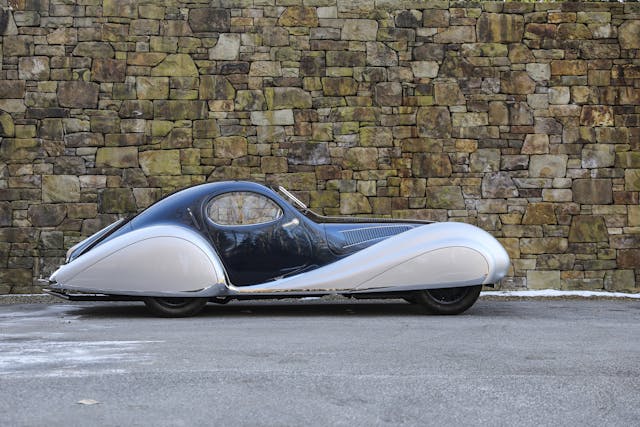
Joseph Figoni bodied the first T150 show car, and by the time he got his hands on a T150-C-SS, he had perfected his art. The resulting aluminum-bodied creations—between 10 and 12, the community holds—became known as “Teardrop” models, or, in the French, “Goutte d’Eau.” Most Teardrops were short-wheelbase models; the rarest include a single long-wheelbase model and the two with enclosed front fenders.
The particular car bound for Gooding’s auction, chassis 90107, is an illustrious member of that already select group. It’s the only example of Figoni’s Modéle New York design, distinguished by the enclosed front fenders, that survives to this day unchanged.
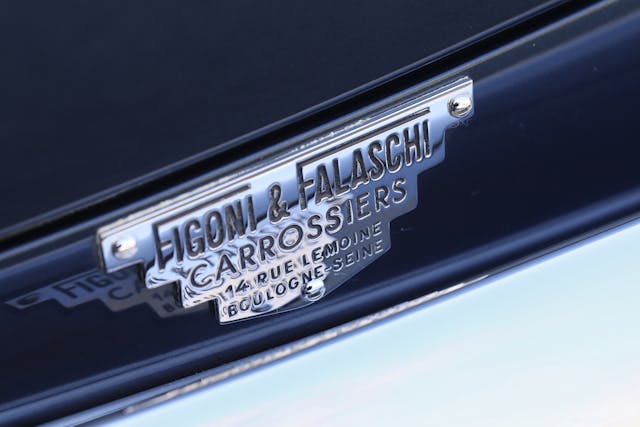
Since its creation, chassis 90107 lived among the privileged set, its status as a work of rolling art affirmed by concours appearances both in-period and the present day. The latter include a Best in Class at Pebble Beach in 2005, following a restoration supervised by The Nethercutt Collection, and a Best of Show at Amelia Island two years later.
$10,000,000 for the only unaltered closed-fender Teardrop, then, seems about right. “An original body is key,” says John Wiley, Hagerty’s manager of valuation analytics. He points to the other closed-fender T150-C-SS, which was rebodied as a convertible before being restored to its original spec in 2000, sold by RM Sotheby’s in May of 2017 for 3,360,000 Euros—approximately $4,096,000 today.
This Talbot-Lago is the first car in five years bound for Amelia Island with an eight-figure estimate. The last car in its price range that graced the Amelia auctions was this 1957 Jaguar XKSS, whose original estimate was lowered to $13M–$16M after RM Sotheby’s announced the car did not have its original engine. It ultimately hammered a no-sale. Amelia Island witnessed an eight-figure result in 2016, when Gooding & Co. sold a Ferrari 250 GT SWB California Spider for $17.16M.
The venue is promising, the market is white-hot, and the car a worthy candidate. Will this Talbot-Lago clear ten million? We’ll be on hand to report back.
